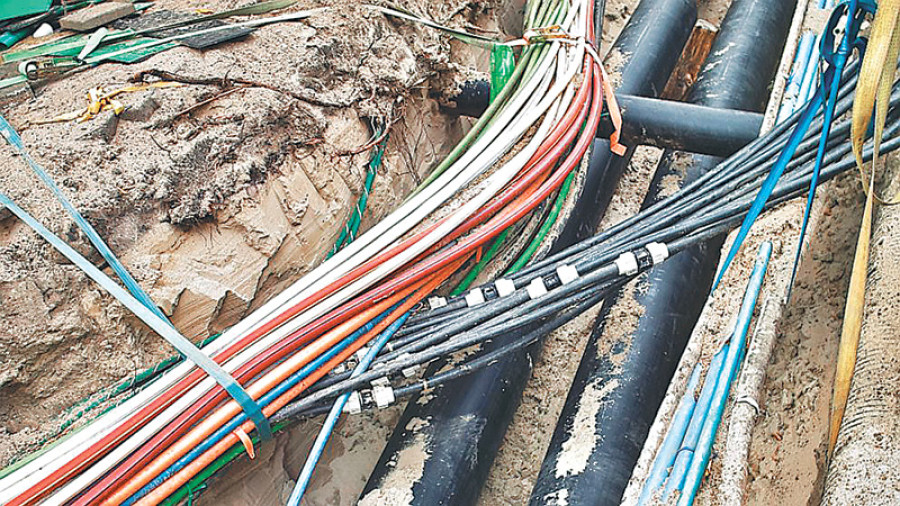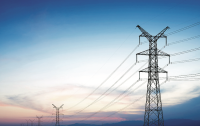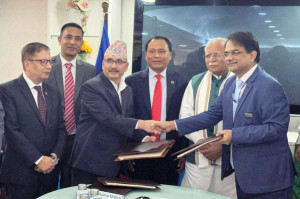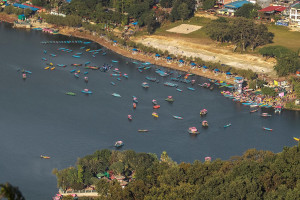Money
NEA to put power lines underground
The Nepal Electricity Authority (NEA) has planned to remove overhead power lines and install an underground system in Kathmandu in order to improve electricity distribution.
Bibek Subedi
The Nepal Electricity Authority (NEA) has planned to remove overhead power lines and install an underground system in Kathmandu in order to improve electricity distribution.
In the first phase, the state-owned power utility will lay underground cables in areas served by the Maharajgunj Distribution Centre.
The Energy Ministry, which is helping the NEA in this task, has formed a high-level coordination committee under the leadership of Energy Secretary Anup Kumar Upadhyay to expedite the process.
Representatives from government agencies like the Department of Road, Nepal Telecom and Kathmandu Upatyaka Khanepani Limited have been included in the committee as their work might be affected when the scheme is implemented.
The committee will plan to ensure that roads, drinking water supply and telecommunication system are minimally affected.
“The committee has held one round of discussions,” said Kulman Ghising, managing director of the NEA who represents the power utility in the committee. “Since the project will impact the work of other government agencies, we have to be very careful when devising methods to execute it.”
The NEA aims to finalize the modality within a couple of months, and it will call for tenders from interested parties to lay underground cables. The authority is currently preparing the bid document.
The NEA has been mulling to adopt a horizontal erection gridding system to lay underground cables as less damage will be caused to roads this way.
Under this system, power lines can be laid over a distance of 100 metres by drilling a pit at one place.
Also, the road will be black topped immediately after the work is completed, according to the NEA.
The major reason behind removing the existing overhead lines and installing an underground system is to increase the reliability of the distribution system besides increasing the capacity, according to the NEA.
“Our existing distribution system is very fragile, and it can’t bear much load. Therefore, the system needs to be upgraded,” said Prabal Adhikari, spokesperson for the NEA.
The Kathmandu Valley’s existing distribution network can’t support a load of more than 400 MW.
The NEA is planning to upgrade it to be able to support up to 2,000 MW.
“In the second phase, electric wires under the Ratna Park Distribution Centre will also be replaced by underground cables, and gradually, the distribution system of the entire valley will be replaced,” said Adhikari.
Apart from laying underground power cables, the NEA is preparing to construct three 132 kV substations at Phutung, Mulpani and Chapagaun to increase the load capacity of the electricity distribution system in the Kathmandu Valley.




 19.12°C Kathmandu
19.12°C Kathmandu















